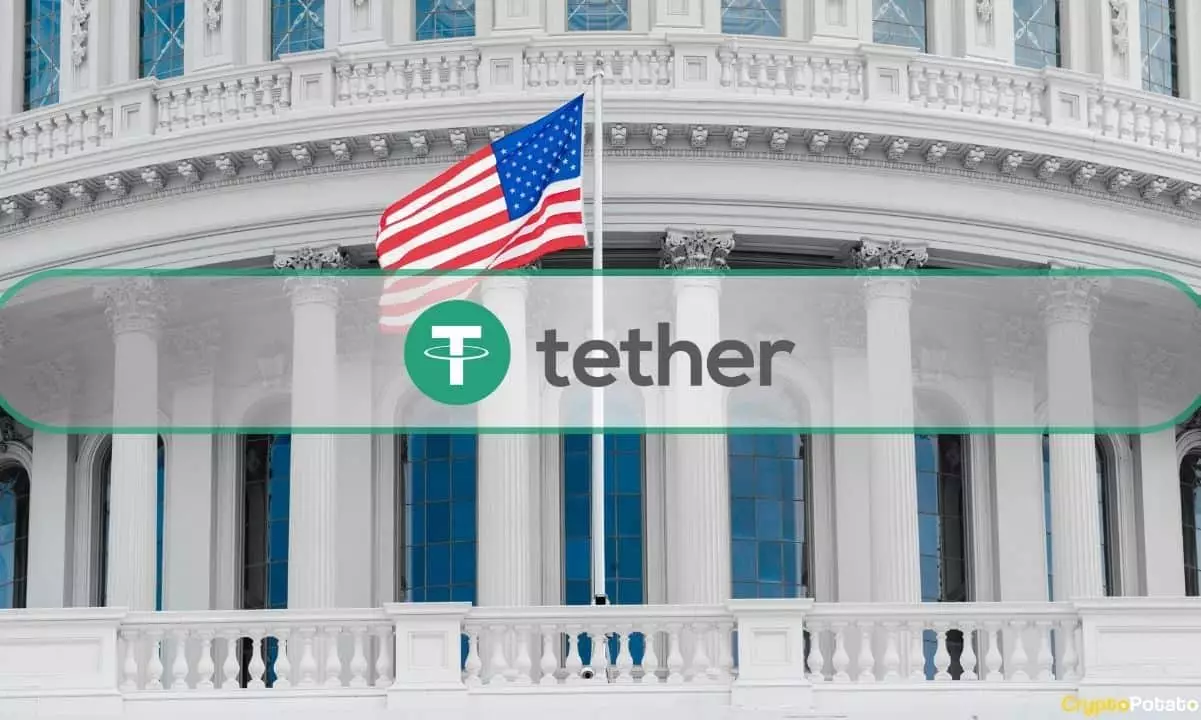In recent discussions among crypto industry experts, Tether has emerged as a potential contender to become the world’s dominant dollar-pegged central bank digital currency. This topic gained attention after Cantor Fitzgerald CEO, Howard Lutnick, expressed his admiration for Tether on CNBC. Lutnick revealed that he holds significant amounts of Tether’s treasuries, which currently exceed $90 billion. Such endorsement from a prominent figure in the financial industry highlights Tether’s growing influence and market presence.
Glassnode on-chain analyst, “Checkmate,” boldly declared that Tether is the CBDC. This statement raises questions about the US government’s capability to shut down Tether’s reserves, just as they did with Russia. Checkmate argues that if the US government can intervene in such instances, it would be reasonable to assume they could also close down Tether. Moreover, he suggests that the US government might have found a way to mitigate their fiscal challenges by tapping into an endless demand for treasuries. According to Checkmate, countries facing collapsing fiat currencies find USDT to be a more reliable alternative to their own funds, as evidenced by the rising popularity of Tether among nations such as Mexico, Venezuela, and Turkey. He concludes that this situation benefits both parties involved.
Bitcoin ESG evangelist, David Batten, points out key distinctions between Tether and a CBDC. While Tether has invested millions in green BTC mining, supported Bitcoin education programs, and partnered with a Bitcoin city, a CBDC lacks such involvements. Travis Kling, a former portfolio manager, emphasizes that Tether’s existence is closely intertwined with the approval of the US government. In the event of a change in the US government’s stance, Tether’s future could be in jeopardy. However, Tether has been distancing itself from US regulators amid the ongoing crackdown on cryptocurrencies, making it increasingly popular as an alternative to traditional forms of stablecoins. It has become the favored choice for many countries around the world.
Tether’s market cap has skyrocketed to a record-breaking $90 billion, surpassing its closest competitor, Circle’s USDC, which currently stands at around $24 billion. This surge in value has also resulted in Tether capturing approximately 70% of the stablecoin market. In contrast, Circle’s market share has plummeted to a mere 18%. This divergence in market performance is evident in the growing number of traders outside of regulated US and UK firms, especially those in emerging markets, who are relying on USDT as a means of transacting.
As Tether continues to gain traction as a widely accepted stablecoin and the potential CBDC of choice for numerous countries, its future appears promising. However, critics argue that Tether’s heavy dependence on US regulators poses a significant risk. Any unfavorable changes in the US government’s regulatory approach could have detrimental implications for Tether’s viability and stability. Nonetheless, its significant market share and growing adoption by traders globally indicate that Tether may very well become the leading central bank digital currency in the near future.
Tether has emerged as a prominent player in the crypto industry, with various industry experts considering its potential to become a central bank digital currency. While praising Tether’s stability and market presence, concerns about its reliance on US regulators persist. Nevertheless, with its growing market dominance and increasing adoption worldwide, Tether’s rise as the preferred dollar-pegged CBDC seems imminent. As the crypto landscape continues to evolve, Tether’s role as a digital currency will undoubtedly shape the future of decentralized finance.


Leave a Reply